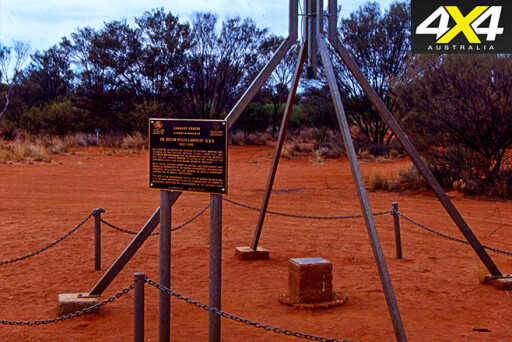
I was cruising down the Stuart Highway a few days ago when I stopped at the rest area at Central Mount Stuart, about 260km north of Alice Springs. The cairn erected here back in 1960 stands close to the highway, while the peak is just a few kilometres west and plainly visible from the road.
John McDouall Stuart, possibly Australia’s greatest explorer, named the peak in April 1860 when he found – by observing the sun – that he was camped in the centre of Australia. Like any good explorer he marked a tree and planted the British flag.
Charles Sturt had earlier planned to be the first European to reach the very heart of the continent. Before he set off on his monumental 1844 expedition, he said: “Let any man lay the map of Australia before him, [what an] honourable achievement to be the first to place foot at its centre.”
Stuart was on that expedition with Sturt, and when he found himself in the heart of Australia 16 years later he named the peak Central Mount Sturt in recognition of Sturt and his considerable achievements.
Only later was the peak’s name changed, and for more than 100 years that peak was considered the centre of Australia. Now there are a few more.
In 1965, as part of a major upgrade to surveying, the Australian Geodetic Datum (AGD) was established as the standard mapping system in the country (since replaced by the even more accurate Geocentric Datum of Australia) and the Johnston Geodetic Station in central Australia was a major reference point.
This cairn was built by the Division of National Mapping and is located about 1km north of Mount Cavenagh homestead – just north of the SA/NT border.
Then in 1988 the Royal Geographical Society of Australasia, looking for something to celebrate the bicentennial, decided to work out the gravitational centre of Australia. The location, now called the Lambert Gravitational Centre, was calculated from 24,500 points spread around the high-water mark of Australia’s coastline, and a major monument has been erected 32km north of the Kulgera-Finke road.
 Researchers at Geoscience Australia have now come up with a few more ‘centres of Australia’. The ‘furthest point from the coastline’ was found by – rather crudely, I thought – drawing a series of concentric circles on a piece of transparent material and moving that over the top of a 1:5 million scale map of Australia.
Researchers at Geoscience Australia have now come up with a few more ‘centres of Australia’. The ‘furthest point from the coastline’ was found by – rather crudely, I thought – drawing a series of concentric circles on a piece of transparent material and moving that over the top of a 1:5 million scale map of Australia.
The centre point in this case was at the centre of the largest circle that could be drawn inside Australia while still just touching the coastlines. This point is located north-west of Alice at 23°02’0” south, 132°10’00” east.
GA’s ‘centre of gravity point’ was worked out from more than 50,000 digitised points around the Australian coast, and each was assigned a weight.
The resultant centre point is where you could, theoretically, balance Australia on a pin. It’s located – to the surprise of all concerned, apparently – very close to the ‘furthest point from the coastline’ marker, at 23°07’00” south, 132°08’00” east.
This wasn’t the first time someone had tried to find Australia’s centre of gravity.
In the 1930s, when Dr CT Madigan travelled through Central Australia and across the northern Simpson Desert, he calculated the centre of gravity by using a metal cut-out of Australia with a plumb bob and string. His measurement was surprisingly accurate, as he selected a point less than 11km due west of the Lambert Gravitational Centre and not all that far from the centre of gravity point selected by Geoscience Australia.
The median centre point of Australia was calculated as the midpoint between the extremes of Australia’s latitude and longitude. That point is located at 24°15’00” south, 133°25’00” east, and is not far west of the Stuart Highway, south of Alice Springs.
You can find more info here. For me, I’ll stop at the Central Mount Stuart memorial whenever I go past, and one day in the not-too-distant future the Johnston cairn may tempt me to leave the highway.

COMMENTS